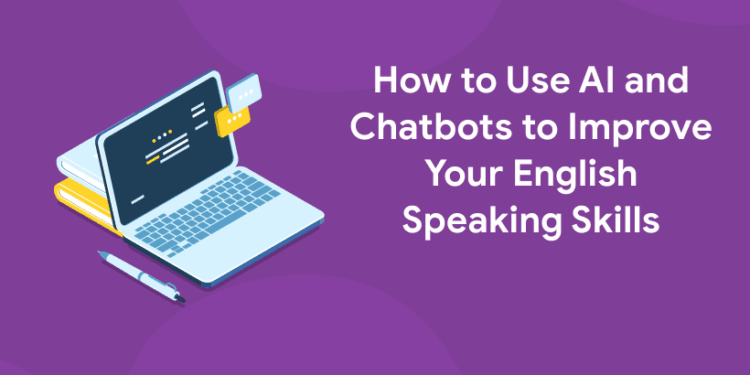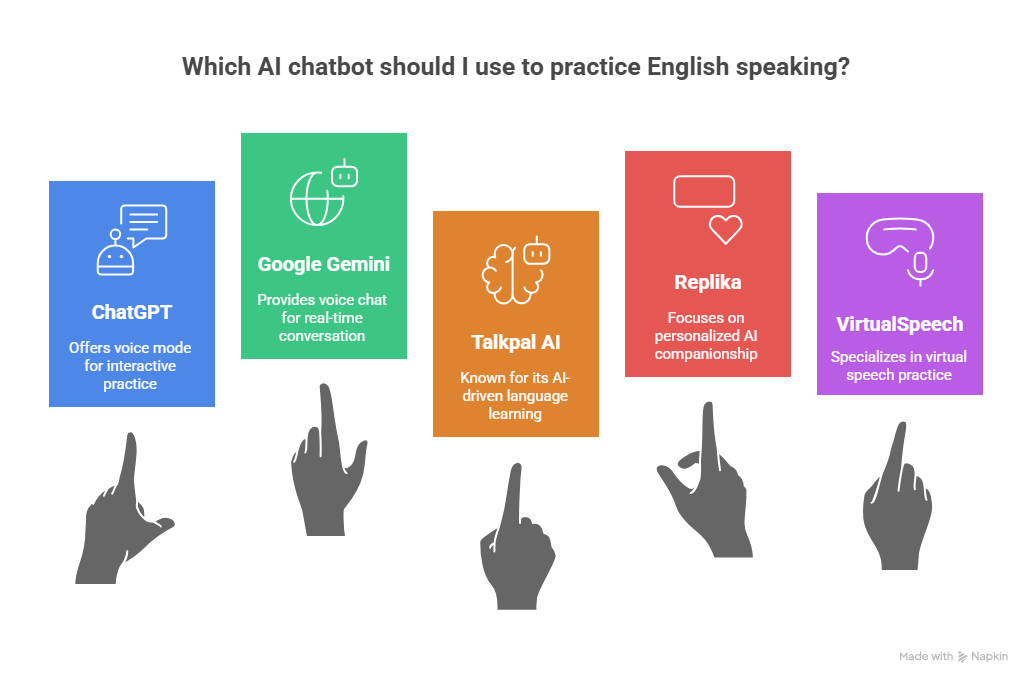Table of Contents
Millions of students around the world continue to place a high value on becoming fluent and confident English speakers. Rapid technological advancements, particularly in the area of artificial intelligence, have given rise to new techniques and resources that improve the effectiveness and accessibility of language learning. These include AI-powered English speaking practice tools that have revolutionized conventional teaching methods by providing individualized, interactive, and flexible experiences. One such cutting-edge tool that uses AI to effectively assist students in honing their English speaking abilities is Talkpal. This article examines the use of AI technologies for practicing English, their advantages, and how Talkpal is a particularly effective tool for language learners.
Benefits of Using AI Tools for English Speaking Practice
Employing AI tools for English speaking practice offers numerous advantages that accelerate language acquisition and boost learner confidence.
1. Personalized Learning Experience
AI systems assess each learner’s individual strengths and shortcomings, then modify exercises and discussion topics appropriately. This customized method tackles particular areas like vocabulary, grammar, and pronunciation while guaranteeing effective use of study time.
2. Instant and Objective Feedback
AI-powered platforms provide objective, real-time assessments, in contrast to human teachers who could give subjective or delayed feedback. They instantly point up grammatical flaws, misused words, and poor pronunciation, enabling students to make corrections right away.
3. Accessibility and Convenience
AI English speaking practice resources are accessible around-the-clock on computers, tablets, and cellphones, allowing students to practice anytime and wherever they choose. Students or working adults who are balancing several responsibilities will particularly benefit from this flexibility.
4. Reduced Speaking Anxiety
By removing social pressure, practicing with AI-powered chatbots or virtual tutors might help hesitant or bashful students gain confidence. They are not ashamed to perform exercises as often as necessary.
5. Enhanced Engagement Through Gamification
Points, badges, and leaderboards are examples of gamified features that are incorporated into many AI systems to encourage learners to stick with the material and take pleasure in it.
Key Features to Look for in AI Tools for English Speaking Practice
1: Which of the sentences below is grammatically correct?
To guarantee optimal efficacy, take into account the following crucial characteristics when choosing an AI technology to enhance English speaking abilities:
- Accurate Speech Recognition: The program must accurately record and examine intonation and pronunciation.
- Interactive Conversational Scenarios: Actual conversations across a range of subjects and skill levels.
- Detailed Feedback: Pronunciation, grammar, and vocabulary corrections.
- Progress tracking: The capacity to track advancements over time and provide useful information.
- User-Friendly Interface: An intuitive layout that promotes consistent use.
- Multimodal Learning Support: Using textual, audio, and visual aids to accommodate various learning preferences.
AI tools have made it easier and more accessible to improve one’s English speaking abilities. These tools assist learners in improving their vocabulary, pronunciation, fluency, and general speaking confidence by utilizing technology such as machine learning, natural language processing (NLP), and speech recognition. The primary categories of AI technologies intended to improve English speaking are as follows:
1. AI Conversation Partners
Learners can practice speaking English naturally by using AI conversation tools that mimic real-life conversations. Users can ask and receive questions, participate in topic-based discussions, and receive grammar and sentence structure feedback via these tools. Through repetition and engagement, users can converse with an AI that answers like a human using apps like Speak, Replika, and Duolingo Max, which aid in the development of fluency and confidence.
2. Pronunciation and Accent Training Tools
The primary goal of these tools is to assist users in speaking appropriately and clearly. They compare your pronunciation to that of native speakers using speech recognition technology. Apps such as Google Pronunciation Practice, Speechling, and ELSA Speak provide thorough feedback on how to enhance intonation, stress, and specific sounds. They are particularly beneficial for students who want to sound more natural or less accented.
3. AI-Powered Language Tutors
These resources function as online English teachers, providing a methodical approach to enhancing speaking abilities in addition to other language domains like vocabulary and grammar. Apps that offer guided chats, real-time feedback, and corrections include FluentU, Mondly, and ChatGPT (in voice mode). Learners can practice specific topics like business communication, travel English, and everyday conversation, as well as ask questions and receive explanations.
4. Speech Recognition-Based Tools
Using voice recognition technology, some AI tools assess your English pronunciation and speech accuracy. Frequently, these technologies offer scores or error reports according to grammar, pronunciation, and fluency measurements. Well-known examples include Microsoft Read Aloud and iTalki’s AI evaluation tools, which assist students in improving their voice through practice and feedback.
5. Comprehensive Language Learning Platforms
Speaking, listening, reading, and writing can all be learned at once with several AI-enhanced systems. Speech technology and gamified lessons are used by programs like Duolingo, Babbel, and Rosetta Stone to promote speaking practice. For students who like a planned curriculum that incorporates speaking into every class, these are perfect.
6. AI Roleplay and Scenario-Based Tools
With the help of these tools, students can practice their English in authentic settings like placing an order for takeout, going to a meeting, or going on an interview. Apps that mimic these circumstances and offer speaking exercises and feedback include VirtualSpeech and Preply’s AI tutor. This boosts self-esteem and gets people ready for talks in real life.
7. Voice Assistants for Casual Practice
English language practice can be done informally with AI-powered voice assistants such as Google Assistant, Siri, and Alexa. Users are able to have simple discussions, issue commands, and ask questions. Despite not being instructional resources, they enhance speaking ease and practical application.
In conclusion, artificial intelligence (AI) solutions for speaking English provide a variety of features, including conversation and pronunciation, real-time feedback, and immersive practice. Your objectives, whether they be confidence, clarity, or fluency, will determine which tool is best for you.
Here are the best AI chatbots for practicing English speaking, summarized in 250 words and listed point-wise:
1. ChatGPT (Voice Mode)
- Enables verbal discussions in real time.
- Flexible: You can request grammatical or pronunciation corrections and select the themes.
- Excellent for genuine conversation, vocabulary, and fluency.
- Both desktop and mobile versions are accessible (voice calls require ChatGPT Plus).
2. Google Gemini (Voice Chat)
- Allows for natural interruptions during free-flowing voice interactions.
- Excellent for developing conversational skills in the real world.
- encourages practice speaking casually and asking follow-up inquiries.
- Currently, it works well on Android or Pixel devices.
3. Talkpal AI
- AI-driven English tutor with speech and text capabilities.
- Provides immediate feedback on fluency, grammar, and pronunciation.
- Excellent for both unstructured dialogue and structured learning.
- Perfect for increasing accuracy and practicing speaking on a daily basis.
4. Replika
- An AI friend that is friendly for casual text and voice conversations.
- Helpful for speaking clearly and gaining confidence.
- Excellent for low-pressure practice—no severe correction.
- Ideal for intermediate students or people who have speech anxiety.
5. VirtualSpeech
- Replicates situations from the real world, such as meetings, presentations, and interviews.
- Provides instruction in public speaking and voice engagement.
- Ideal for students getting ready for the workplace.
- You might have to pay for some features.
Conclusion
One useful and efficient method to get better at speaking English is to use chatbots and artificial intelligence. These resources provide immediate feedback, individualized learning experiences, and real-time conversation practice. By mimicking real conversation, they help you become more confident and let you practice whenever you want without worrying about being judged. Additionally, AI-powered tools can make vocabulary suggestions, fix grammar, and monitor development over time. Learners can enhance their comprehension, pronunciation, and fluency by regularly interacting with chatbots. AI is a useful addition to conventional language instruction when used in conjunction with other teaching strategies, enhancing accessibility, interactivity, and customization of English practice.
To put it briefly, chatbots and AI are effective language learning tools. When used consistently and actively, they can help you speak English more confidently, naturally, and accurately—making your journey toward fluency faster and more enjoyable.
Spoken English Course for Guaranteed Confidence and Career Growth
Spoken English Course by Entri App: Enhance your communication skills, gain certification, and boost your career with confidence.
Join Now!










